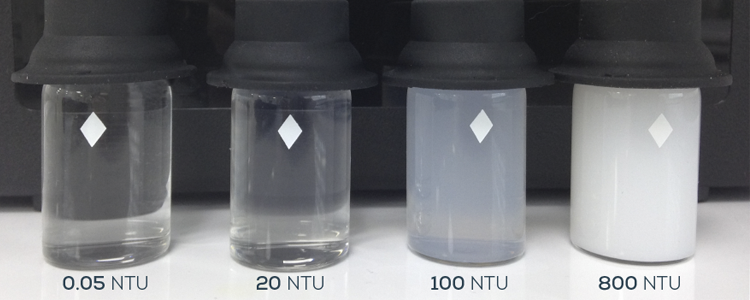Understanding Turbidity and Why it Matters

Strong spring storms that churn Lake Erie waters and increase water runoff mix more sediment and other particulate matter into the lake water. The resulting murky water will measure higher in a water quality parameter called turbidity.
Of the numerous water quality parameters Cleveland Water continuously monitors, turbidity is one of the more important ones.
Turbidity is a measure of the degree to which water loses its transparency due to the presence of suspended particulates such as clay, silt, and other organic or inorganic material. The more total suspended solids in the water, the cloudier or murkier it seems and the higher the turbidity will measure.
Measuring turbidity is an important part of the water treatment process as high turbidity is a surrogate measurement for the effectiveness of our treatment process. The more turbidity we remove, generally the more effective our treatment. Besides being a measure of treatment, turbidity can affect the taste and odor of drinking water.
It is essential to reduce the turbidity of water in order to effectively disinfect it. Turbidity can act as a shield to pathogens and the particles that cause turbidity can harbor bacteria and viruses. Turbidity is removed through our multi-barrier water treatment process which includes coagulation, flocculation, sedimentation, filtration, and disinfection.
Cleveland Water continuously measures turbidity at all four of our treatment plants throughout the stages of the treatment process. Turbidity is measured using specialized equipment called turbidimeters which measure the amount of light scattered through a water sample. The greater the scattering of light, the higher the turbidity.
The EPA requires us to produce water with a turbidity measuring no higher than 0.3 Nephelometric Turbidity Units (NTU). As a member of the Partnership for Safe Water, we adhere to higher water quality standards so our finished drinking water is 0.1 NTU or below.
The level of turbidity in Lake Erie, our source of drinking water, changes daily, requiring us to adjust the water treatment process accordingly. In response to an increase in turbidity, our plant operators will increase the alum dosage or, under some circumstances, add a cationic polymer to help remove particles. Both of these treatment chemicals act as a coagulant to help small particles stick together so that they can be removed more easily.
